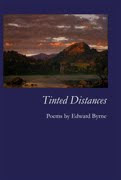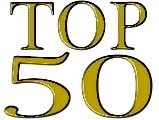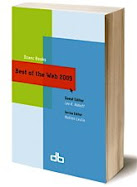 With the Labor Day weekend upon us, I’d like to offer the following excerpt from a review I wrote of B.H. Fairchild’s Local Knowledge, which was published in the Spring/Summer 2006 issue (Volume VII, Number 2) of Valparaiso Poetry Review. This section of my review addresses the important influence on Fairchild’s developing perspective as well as his eventual composition of poetry by the poet’s early witnessing of an attention to careful workmanship or a pride in manual labor exhibited by his father and other workers.
With the Labor Day weekend upon us, I’d like to offer the following excerpt from a review I wrote of B.H. Fairchild’s Local Knowledge, which was published in the Spring/Summer 2006 issue (Volume VII, Number 2) of Valparaiso Poetry Review. This section of my review addresses the important influence on Fairchild’s developing perspective as well as his eventual composition of poetry by the poet’s early witnessing of an attention to careful workmanship or a pride in manual labor exhibited by his father and other workers.* * *
Fairchild's attitude toward art and craftmanship arose when he was a boy witnessing his father and other machine shop employees display great care and pride in their work. Fairchild tells Paul Mariani in an interview that appeared in the Fall 2005 issue of Image, "among my earliest memories is standing by my father as he operated a lathe. He was a perfectionist and so introduced me to the idea of craft, 'a small thing done well.' The odd fact that I fell in love with craft itself before I ever came to poetry has had a huge influence on the way I think about poetry. I vividly remember how he would point out something another machinist had done as 'good work,' clearly the highest kind of praise, and how disdainfully he would refer to other work as 'sloppy.' It was a moral distinction as much as an aesthetic one and made a deep impression on me."
Consequently, the afterword to Local Knowledge, bearing the title "Lathework," details this influence even further: "The first image, I was to discover, holds the model for everything I have written, especially poems: lathework. In machine shops in Houston, Lubbock, Midland, and Snyder, Texas, I would as a boy stand on the wooden ramp next to my father and watch his hands move gracefully and efficiently over the lathe, maneuvering the levers and rotary handles and making the bit move in and out, back and forth, as the huge chuck spun a section of drill pipe in its iron grip." Indeed, the younger Fairchild developed a sense of reverence for the perfectionism exhibited by his father and the other men he watched work those machines.
Repeatedly, Fairchild has returned in his poetry to actions observed in the machine shops. In "Toban's Precision Machine Shop" Fairchild speaks of the shop's "spiritual" atmosphere, attentive to the search for "perfection," and the "possibility" of aesthetic pleasure he recognized as evident in the tools of the trade:
. . . It is a shop
so old the lathes are driven by leather belts
descending like some spiritual harness
from a long shaft beneath the tin roof's peak.
Such emptiness. Such a large and palpable
sculpture of disuse: lathes leaning against
their leather straps, grinding wheels motionless
above mounds of iron filings. Tools lie lead-
heavy along the backs of steel workbenches,
burnished where the morning light leaks through
and lifts them up. Calipers and honing cloths
hang suspended in someone's dream of perfection.
There are times when the sun lingers over
the green plastic panels on the roof, and light
seems to rise from the floor, seems to lift lathes
and floor at once, and something announces itself:
not beauty, but rather its possibility... .
Throughout his poetry, readers discern not only Fairchild's respect for the craftsmanship of the workers he watched in the machine shops, but often a deep regard for the intelligence and character of the individuals as well. Fairchild's personae are people who do not support the easy stereotyping or dismissal by others that might exist elsewhere. In the closing stanza of the poem, readers see Toban, the shop owner, as he "sits in his office among his books / with music settling down on his shoulders / like a warm shawl. He replaces the Mahler / with Schubert, the B-flat sonata, and sends it / unravelling toward me, turning the sound / far above the cluttered silence of the lathes." Fairchild makes note of this poem, and his attempt to counter others' stereotypical depictions of characters like those in his poems, in his conversation with Mariani:
Fairchild further praises the men in his memory who now populate his poetry: "The men in those shops, including my father, were highly skilled laborers who performed tasks whose intellectual complexity was at least equal to if not more demanding than those performed by academic intellectuals."
[Visitors are invited to read the rest of my review of Local Knowledge. I also recommend readers visit the Lannan Foundation web site to hear a reading by B.H. Fairchild and an interview of the poet by R.S. Gwynn.]
I resent the way blue-collar labor is often stereotyped as being utterly divorced from high culture, as if it were performed only by men and women whose lives are a cycle of beer drinking, Monday night football, and NASCAR, and who have never read or wanted to read The Brothers Karamazov or Anna Karenina. I have a cousin, for instance, who is a machinist and comes in and sets the parameters on the lathe (they're computerized now), then leans back and reads Heidegger. Maybe that's exceptional, but I also have a poem, "Toban's Precision Machine Shop," that resulted from walking into a very old shop in San Bernardino (so old the lathes were driven by belts connected to an overhead shaft) where a Mahler symphony was flooding the air.
Fairchild further praises the men in his memory who now populate his poetry: "The men in those shops, including my father, were highly skilled laborers who performed tasks whose intellectual complexity was at least equal to if not more demanding than those performed by academic intellectuals."
[Visitors are invited to read the rest of my review of Local Knowledge. I also recommend readers visit the Lannan Foundation web site to hear a reading by B.H. Fairchild and an interview of the poet by R.S. Gwynn.]

































